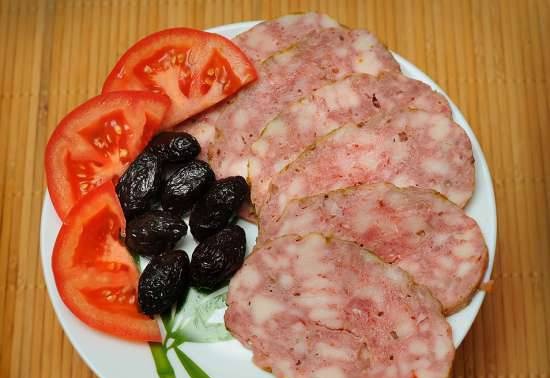Ancient Russia in the great days
The great day of Christ's Resurrection is coming. Having completed the course of the fast, our ancestors prepared to joyfully meet the great holiday. According to them, the very unreasonable nature, as it were, sympathizes with the joy of the Orthodox. In the east of the sky, the dawn on this day is pinker, more beautiful, and the sun itself trembles - plays joyfully ...
In the Tsar's palace, in honor of the great day, the cross chamber shines with its decoration. In it, in the evening of a bright day, the Emperor listens to the moon room. Gold and semi-precious stones on the frames of icons and imperishable crowns at the faces of saints on wall images shine brightly. New shrouds are already hung under the icons, embroidered with gold, cast in pearls and trimmed with beads. The candles have already been brought to the ardent wax, which were lighted from the fire of heaven ... The Divine service performed by the cross priests is reverently going on. One can hear the harmonious singing of the cross deacons, that "in the mansion and in the church they honor and speak and speak psalms." For their zeal for the service of God, the Great Sovereign will not forget and grant them for the holiday "a scarlet and a wide taffeta", but "for his long-term health" he will add "a stone to the suitors for the summer".
At the end of the midwife, the Sovereign went to the Altar room. All the highest palace and service ranks, boyars, okolniki and other dignitaries, were to gather in order to “see his great Sovereign with bright eyes” and then accompany the Sovereign to matins and mass. Other ranks of service people awaited the tsar's contemplation in the vestibule in front of the Front, on the Golden Porch and on the square near the All-Merciful Savior, on the Bed and on the Red Porch.
The rite of the tsar's contemplation was performed as follows: the Emperor sat in armchairs in a camp silk caftan over a zipun. The dormitories held in front of him all the festive attire: opašen, a kaftan, a zipun, a stand-up necklace (collar), a throated hat and an Indian staff of ebony. Those entering the room, seeing the sovereign's bright eyes, beat their foreheads (that is, bowed to the ground) and retreated to the share place.
At the end of the ceremony of contemplation, the procession began to Matins in the Assumption Cathedral. The sovereign is in a golden opashnaya with pearl decoration, with semi-precious stones and in a throated hat. Around him are boyars - also in "gold-takh" (golden caftans) and gorlat hats. Before him are (three in a row) stewards, solicitors, nobles - all in "gold". At the entrance to the cathedral, all the ranks in orderly order stop at the western doors in specially prepared bars. The sovereign entered the cathedral, and the dignitaries went to the northern doors - to wait for "the coming to the cathedral with crosses." After the usual procession of the cross, the Emperor took his place in the cathedral, which was immediately filled with many servants dressed in "gold".The entire temple shone with lights, brightly reflected on the golden frames of the icons, on the bright vestments of the clergy, on the "gold" of officials. Matins of the Bright Day began - "a celebration of celebrations."
They sang the praising stichera, sang Easter, and the Emperor, venerating the holy icons, “performed a kiss on the mouth” - first with the patriarch, then with the metropolitans, archbishops and bishops. Boyars and other dignitaries also approached the patriarch and, kissing his hand, received red eggs, and sometimes gilded ones. Having become Christ with the clergy. The sovereign took his place and, favoring his hand, handed out eggs to the boyars who approached him, the okolniks, the Duma nobles and the Duma clerks, close and orderly people, stewards, solicitors and nobles. The eggs were painted on gold with bright colors or colored herbs, "and in the herbs are birds and animals and people." Silently, harmoniously, in compliance with the exemplary order, the act of christianizing the royal was performed.
Having defended the matins, the Emperor, according to the ancient Christian custom, marched to the Cathedral of the Archangel - to take Christ with his parents and ancestors, that is, to worship their ashes. The rector of the cathedral and the brethren approached the Emperor's hand and received eggs. In the Annunciation Cathedral, venerating the holy icons and relics. The Emperor consulted with his spiritual father and kissed his mouth with him. On the same day, but mostly on the second day of the holiday, the Emperor visited the Voznesensky and Chudov monasteries, as well as the Kirillovskoye and Troitskoye metochions. The Sovereign gave the rulers of the monastery and the brethren to his hand and gave them eggs.
These visits, as befits a bright holiday, were very solemn: like a red sun, the Tsar appeared before the eyes of the people, in all the grandeur of his dignity, surrounded by the same retinue that accompanied him on his way out to the bright matins.
Returning to the palace. The sovereign walked into the dining room, where the boyars were waiting for him, who were left that night in the palace "for protection", that is, to protect the palace and the royal family, as well as those who for some reason - due to illness or decrepitude - could not listen to Matins at cathedral. Everyone approached the Emperor's hand and received eggs from him. But it was necessary to hurry: the Emperor had not yet confessed with the Empress and was waiting for the Patriarch. The Tsar received most of the Primate, who came to celebrate the holiday, in the Golden Chamber. It was the middle chamber in the palace, richly decorated with wall paintings.
Having received the patriarch, the Emperor walked with him to the Empress. They were accompanied by a large retinue: boyars, okolnichy, Duma nobles and others. and so on. The queen met them in her Golden Chamber, also decorated with everyday letters, in accordance with the purpose of the chamber. There one could see images of the holy Empress Helena upon her acquisition of the life-giving Cross of the Lord, the baptism of the Grand Duchess Olga, the daughter of the Iberian Tsar Alexandra, the victorious Persian ... First, the Emperor consulted with the Tsarina. Then the patriarch, metropolitans and bishops blessed her with holy icons. The highest dignitaries kissed the queen's hand, hitting her forehead.
Meanwhile, time passed, the evangelism for the early liturgy began. The Tsar listened to the early liturgy in the palace church, in a close family circle, but towards the later he again went to the Assumption Cathedral, and also in all the splendor of his dignity, also accompanied by a huge retinue of secular officials. Returning home after a late mass, the Tsar walked straight to the Tsarina's chambers and presented painted eggs to mothers, treasurers, room attendants and servants and lower court officials.
Until now, all the rituals and actions that accompanied the celebration of the Great Day took place with the glitter of gold and semi-precious stones, with all the greatness of the sovereign master of the Russian land. But the picture changes: the Emperor is among the unfortunate convicts ... Yes, on this Great day, not a single unfortunate person should have been forgotten."The Lord is risen for you too!" - says the Great Sovereign, distributing gifts in prisons and dungeons and ordering “to give them food in part hot, in part boiled, in part lamb, in part ham; and porridge from fashion cereals, pies with eggs or meat, which is more decent; and for a person to buy bread and a two-cash roll, "and wine and honey ... But this is not enough: in the Tsarina's Golden Chamber a table was being prepared for the poor brethren ... So the Tsar spent the Great Day, barely finding time to rest.
But not only the first day - the Tsar and Tsarina devoted the entire Bright Week to visits to nearby and distant monasteries and to the generous distribution of alms to the poor and crippled.
Following the example of the Tsar, the Orthodox people greeted the Great Day of the Bright Resurrection just as solemnly. In all boyar, merchant and generally more or less prosperous houses, preparations for the holiday began long ago. They mashed March kvass, frothy mash, boiled honey-lipets, dyed eggs, and prepared various dishes. Tables, shelves, benches - everything was covered with heaps of multi-colored eggs, Easter cakes and Easter. Many of these reserves were intended for those who had the misfortune to meet the Great Day in jails and prisons. Significant sums were allocated to ransom debtors so that they could share the joy of the Great Day with their families. But with special care, our ancestors resumed the splendor of the holy icons for the holiday, cleaned the vestments on them to make them shine brighter, decorated them with flowers and fresh willows, and illuminated them with new lamps. It is unnecessary to add that the whole house was also put in order so that everything would remind of the bright joy of the Great Day.
The night before the holiday was usually spent awake. Long before Matins the churches were already filled with people. Those who remained at home prayed, lighting up the lamps, and waited for those returning from the church to exclaim a joyful greeting: "Christ is Risen!" Having talked and rested, everyone considered it their duty to attend Vespers. But there was a lot of work at home: on the Great Day, the beggar brethren freely appeared in the houses, where they were given food, with the wish to break the fast in joy and holiness. The blessed, the holy fools, the shaking, the lame, belted with a rope, with thick staffs in their hands, for many were welcome guests on this day ...
The bright week was having fun. Swings, rolling eggs, various games - this is what the youth did, but most of all they liked to ring with might and main on the bell towers. And those who had a bitter loss in their hearts like a heavy stone, moved away from the noise of the city to the cemeteries, where prayers were sung over the graves, and sometimes bitter lamentations ... But the cemetery these days spoke more about life: the rustle of blossoming branches was heard , everywhere there was a close awakening of life, and among the prayers, the joyful one was most often heard: "Christ is risen from the dead, trampling down death with death and giving life to those in the grave."







